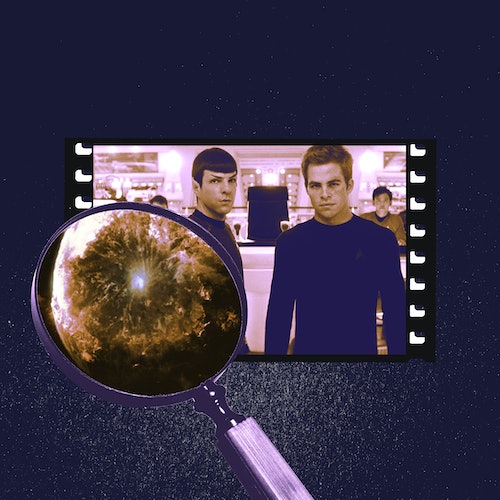“Star Trek” reinvented the long-running franchise, but its grasp of black holes and the properties of its fictional red matter don’t track. Time travel is familiar territory to Trekkies, but in 2009, J. J.
Abrams used it to . Abrams’ drastic reset of the Star Trek franchise timeline hinges on time travel through , which has long been a and may even (although you ). Because black holes are so dense that they bend spacetime, some physicists and science fiction authors speculate that a black hole might actually warp spacetime into a tunnel between two points in the universe — or two points in time.
But instead of naturally-occurring black holes, the black holes that create ’s wormholes are artificially-induced, unstable, and extremely fickle. And thereby hangs a tale. The year is 2387, and scientists have invented an exotic form of matter, dubbed “red matter,” from an isotope of lithium called decalithium (not to be confused with dilithium, a molecule composed of two lithium atoms and the main fuel sources for Starfleet vessels’ warp cores).
It’s worth a quick side note that there really is a lithium-10 isotope, but while it’s radioactive, it’s never destroyed a planet and probably never will. When subjected to the intense heat and pressure of a planet’s core, red matter does … something … and causes the planet to collapse into a singularity, which planets (and even most stars) aren’t capable of on their own. When Ambassador Spock and a Romulan mining vessel called Naruda fly through a wormhole, courtesy of a black hole spawned by red matter, they come out the other side at different points in the universe’s past and rewrite the whole timeline of Star Trek.
Georgia State University astronomer , who studies the supermassive black holes that lurk at the center of galaxies, spoke to about black holes, red matter, and how to save your favorite planet from a supernova. (This interview has been edited for length and clarity. ) You don’t actually need an exotic type of matter to cause a star to collapse into a singularity.
Massive stars (greater than about 20 times the mass of the Sun) do this when they fuse enough of the elements in their centers into iron. During most of its life, a star is balanced by gravity pulling inward and radiation pressure from fusion that pushes outward. Once fusion slows enough, gravity will win and collapse the star.
In the process of collapsing, a supernova explosion is created which blasts off a large amount of the stellar material. A black hole will only be formed if there is more than about two Suns worth of material left to collapse down. Otherwise it creates a , not a black hole.
Planets aren’t massive enough to collapse into black holes, and since they aren’t balanced by fusion that creates radiation pressure, they are already as collapsed as they can be. Atomic and molecular bonds in rock, metal, and all the stuff that planets are made of are what hold up planets against gravity. No special type of matter could suddenly turn off those chemical bonds.
This is something that particle colliders can do and have done. We regularly produce exotic forms of matter that don’t last very long by smashing isotopes together. Entire new elements on the periodic table have been discovered this way.
No. If you tried to slowly grow a black hole in the center of the star, you would end up partially replicating the process that stars go through naturally, and a supernova explosion would occur. If you instead tried to magically place a large black hole in the center of the star, you could potentially eat the star, but then you have disrupted the gravitational balance of the planetary system, and the black hole could just as well eat the planets you were trying to save.
So this would not be a good way to save your favorite planet. Most planetary systems wouldn’t need to be protected from a supernova anyway! Most stars will never go supernova. Only the rare, very massive stars will do that (about eight times the mass of the Sun and larger).
Stars like our Sun will die a more gentle death by puffing off their outer layers, kind of like ’s Caterpillar puffing out smoke clouds. This creates a planetary nebula (lots of those pretty Hubble Space Telescope pictures!) and leaves behind the hot inner core where fusion cannot occur any more. We call that leftover core a white dwarf, and it simply radiates heat away and cools down for the rest of time.
.
From: inverse
URL: https://www.inverse.com/science/artificial-black-hole-star-star-trek-2009-film



